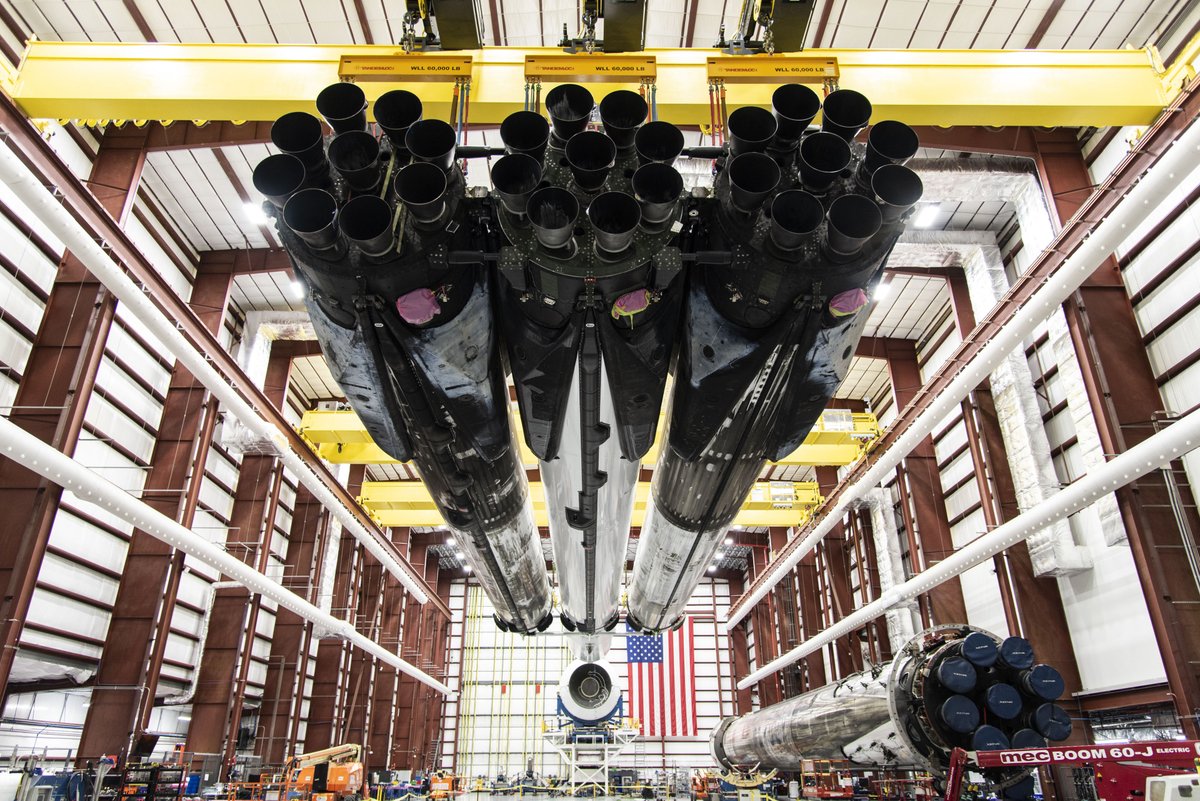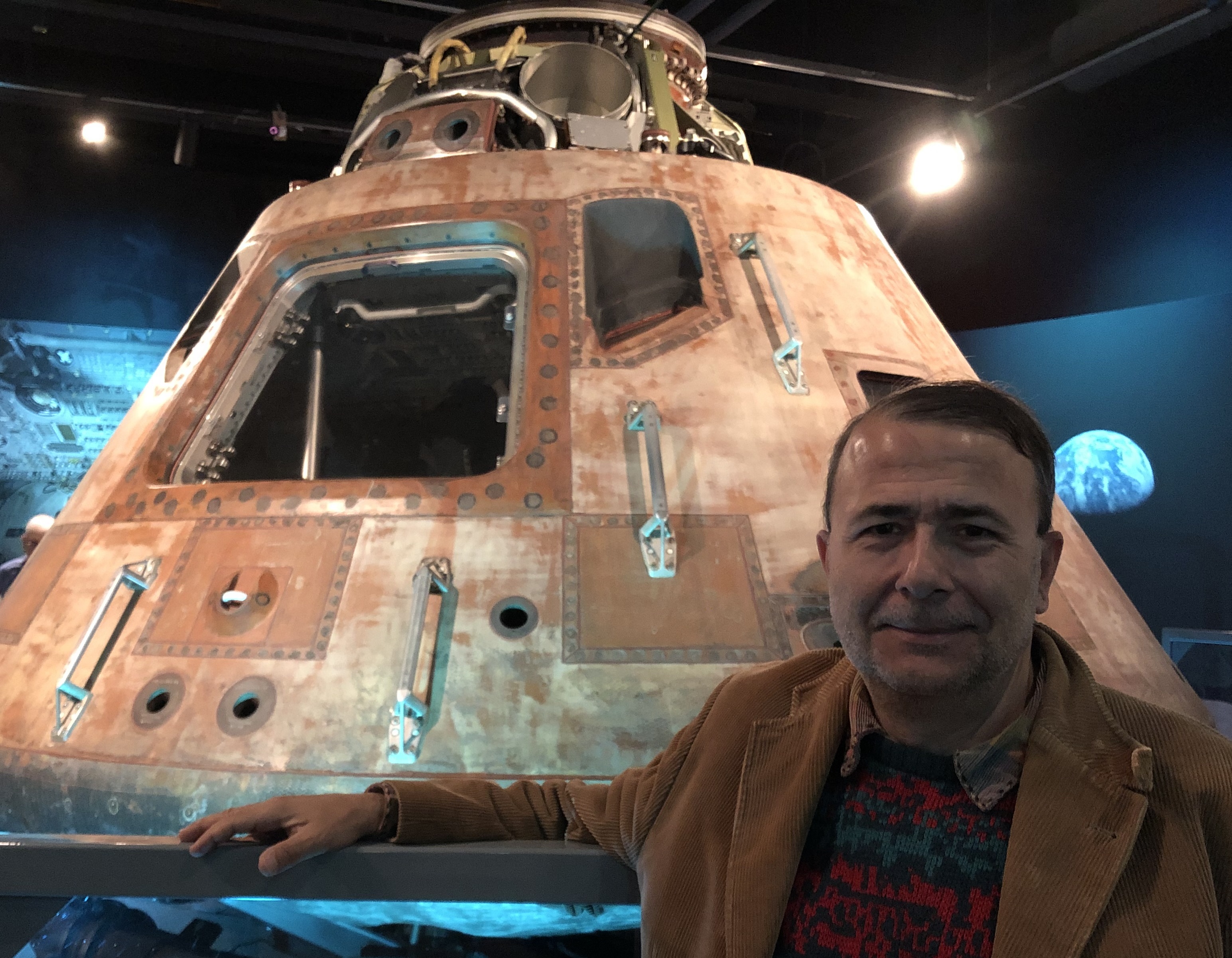SpaceX Looks Ahead to Certification Milestone with Falcon Heavy Launch
Tonight's liftoff is big for SpaceX's military-payload aspirations.

Update, June 24 at 9:20 p.m. EDT: SpaceX has announced they are now targeting a 2:30 a.m. EDT (0630 GMT) launch time, three hours into their original launch window.
A panoply of satellites is awaiting liftoff aboard a Falcon Heavy rocket on a mission that will mark a milestone in SpaceX's quest to become a U.S. Air Force-certified launch provider.
The mission, which is known as Space Test Program-2, or STP-2, will deliver two dozen spacecraft and experiments to different orbital paths around the Earth. This voyage will be only the third launch of SpaceX's heavy-lift rocket, the first time the Falcon Heavy has deployed multiple satellites, and the vehicle's first night launch.
Liftoff from NASA's Kennedy Space Center in Florida is scheduled for a 4-hour launch window that opens at 11:30 p.m. EDT tonight (June 24; 0330 GMT June 25). You can watch the launch live on Space.com courtesy of SpaceX or directly through the company's website.
"STP-2 is the first launch of a government payload on a Falcon Heavy vehicle, and is one of the most challenging missions the Space Missile Systems Center has ever launched," Air Force Col. Robert Bongiovi, director of the Launch Enterprise Systems Center, said during a news conference held June 7.
Related: This Is What 2 Dozen Satellites Look Like Packed for Launch on a SpaceX Falcon Heavy
By performing a record four engine restarts and firings, the Falcon Heavy's second stage will place 24 research and development satellites on three separate orbital courses. Air Force officials estimate the cost of the mission to be about $750 million, with the rocket and its launch pegged at $160 million.
Get the Space.com Newsletter
Breaking space news, the latest updates on rocket launches, skywatching events and more!
The Air Force is managing the mission through the military's Space Test Program. "The STP-2 mission is also the third certification flight for the Falcon Heavy," Bongiovi said. Today's launch is expected to move the rocket closer to spaceflight-worthiness for the Air Force Space Command launch dubbed AFSPC-44 in the fall of 2020. "We're excited about the opportunity to provide and delivering on-orbit, cutting-edge technologies for our mission partners."
In addition to carrying the Air Force's payloads, the STP-2 mission will launch payloads for NASA, universities and the National Oceanic and Atmospheric Administration (NOAA). NASA is testing a deep-space atomic clock that will help future spacecraft navigate through deep space and a "green" propellant that is safer to use. Other satellites will gather data about how spacecraft withstand the hazards of space and about charged particles streaming off the sun.
"We're excited to join NASA, NOAA and over a dozen other organizations to make this mission a success," Col. Timothy Sejba, chief of the Advanced Systems Development Directorate, said during the June 7 news conference. "We're excited to partner with SpaceX in this unique launch capability they provide with Falcon Heavy."
STP-2 is the first Falcon Heavy mission to reuse previously flown rocket segments. The side rockets flew during the second Falcon Heavy launch in April, successfully delivering the commercial communications satellite Arabsat-6A to geostationary orbit. Only the core stage will be new, since the center booster from that mission toppled into the ocean because of rough seas.
STP-2 marks SpaceX's first Falcon Heavy launch for the military, and comes after the company's founder and CEO, Elon Musk, waged an intense campaign for his company to be included as an equal-launch service provider for the Air Force after a recent decision that prioritized United Launch Alliance, Blue Origin and Northrop Grumman.
STP-2 was originally scheduled to fly in 2015, but development issues with the Falcon Heavy rocket first pushed the mission to 2018, and finally to 2019.
Initially, this mission was just a way to characterize the Falcon Heavy launch vehicle for future use by the National Security Space Launch program, Bongiovi said. Now, it has become the Air Force's first launch of used Falcon Heavy booster rockets, which is a key step in reducing the price of these launches.
"The use of the previously flown hardware is providing critical insight in the reusability and quality assurance that allow us to provide space access to the war fighters in a more cost-effective and expedient manner," Bongiovi said.
- SpaceX Falcon Heavy Sticks Triple Rocket Landing with 1st Commercial Launch
- A Year After SpaceX's 1st Falcon Heavy Launch, Starman (and a Tesla) Sail On
- SpaceX's Falcon Heavy Rocket: By the Numbers
Follow us on Twitter @Spacedotcom and on Facebook.
Join our Space Forums to keep talking space on the latest missions, night sky and more! And if you have a news tip, correction or comment, let us know at: community@space.com.










